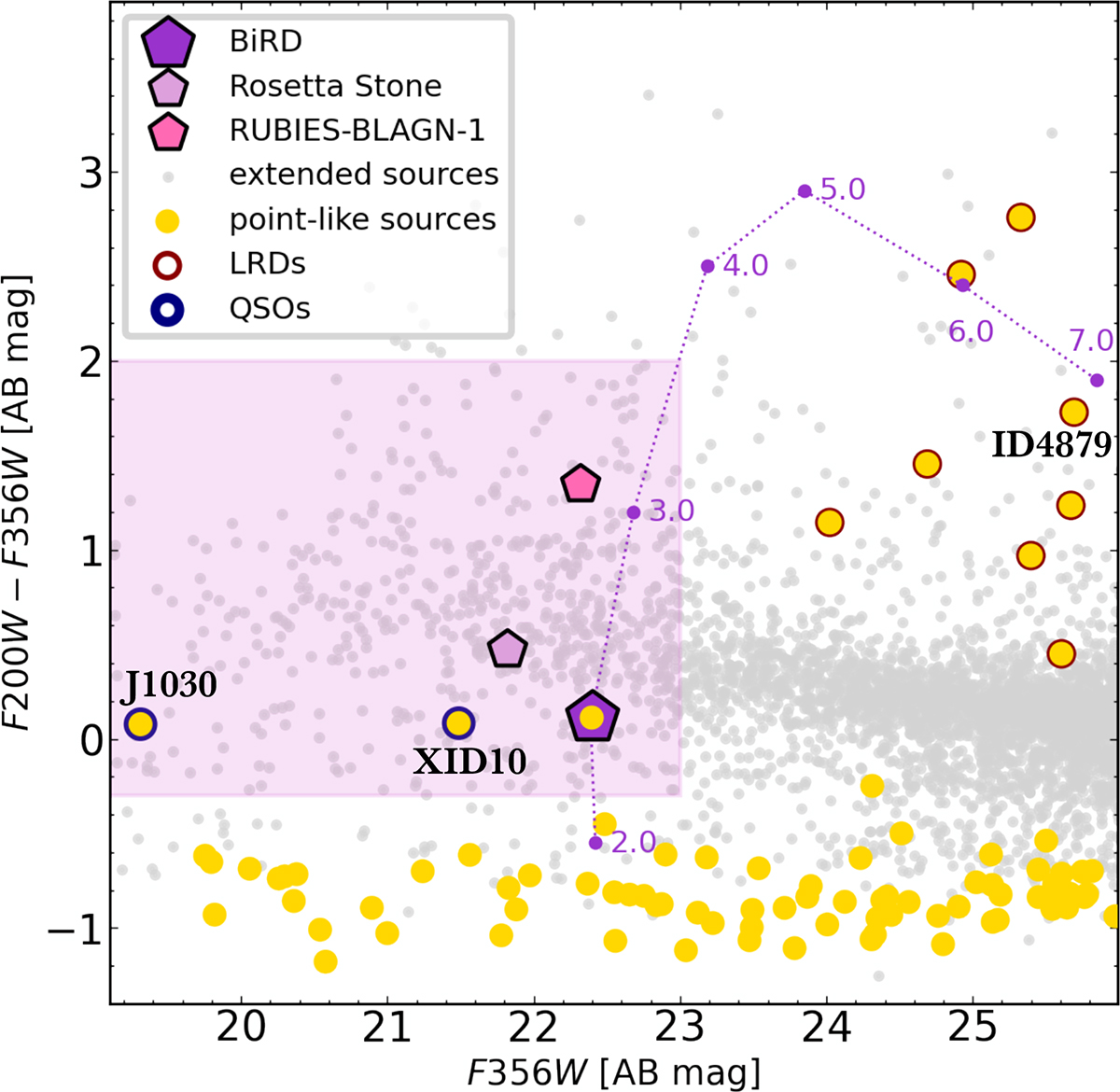Fig. 1.

Download original image
F200W − F356W color vs. F356W magnitude distribution of JWST-detected sources in the J1030 field. The gray dots represent the extended sources, while point-like sources are shown as yellow filled circles. Stars align along a horizontal sequence at F200W − F356W ∼ −0.9. Faint (F356W > 24) and red (F200W − F356W > 0) point-like objects (filled circles with red contour) are mostly LRD candidates at z > 4 (e.g., ID4879 at z = 5.95; see text for details). The three bright (F356W < 23), point-like objects above the stellar sequence are two standard, X-ray detected broad line AGNs (J1030 and XID10, shown as filled circles with blue contours) and the BiRD (purple pentagon; see text for details). The dotted line shows the track followed by the BiRD if moved at different redshifts as labeled from z = 2 to z = 7. The smaller pentagons show for comparison the position of two spectroscopically confirmed LRDs at cosmic noon, discovered with JWST, namely the Rosetta Stone at z = 2.26 (plum; Juodžbalis et al. 2024a) and RUBIES-BLAGN-1 at z = 3.1 (pink; Wang et al. 2025). The colored box shows the selection region used to compute the space density of LRDs at cosmic noon (see Section 5.4).
Current usage metrics show cumulative count of Article Views (full-text article views including HTML views, PDF and ePub downloads, according to the available data) and Abstracts Views on Vision4Press platform.
Data correspond to usage on the plateform after 2015. The current usage metrics is available 48-96 hours after online publication and is updated daily on week days.
Initial download of the metrics may take a while.


